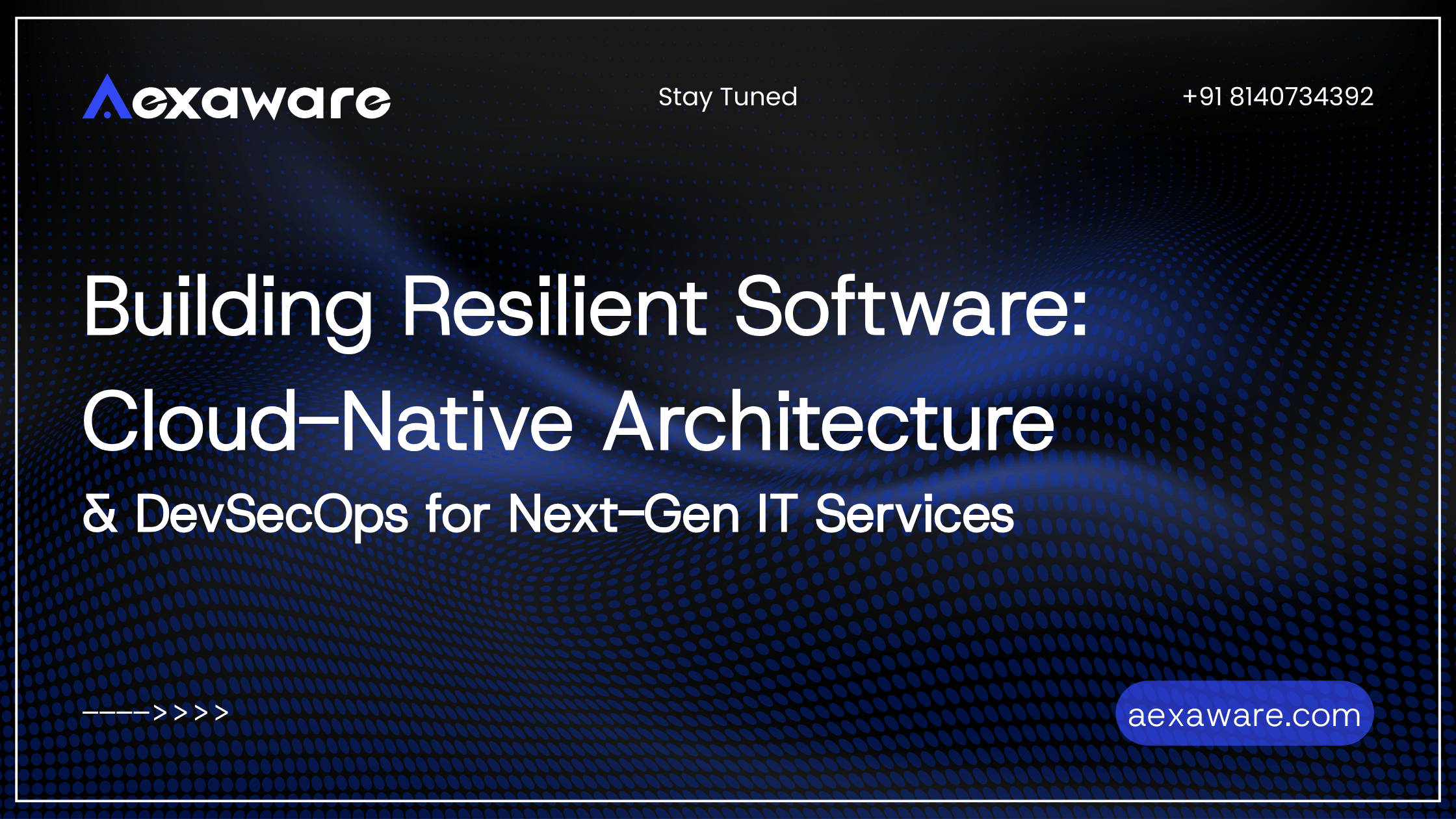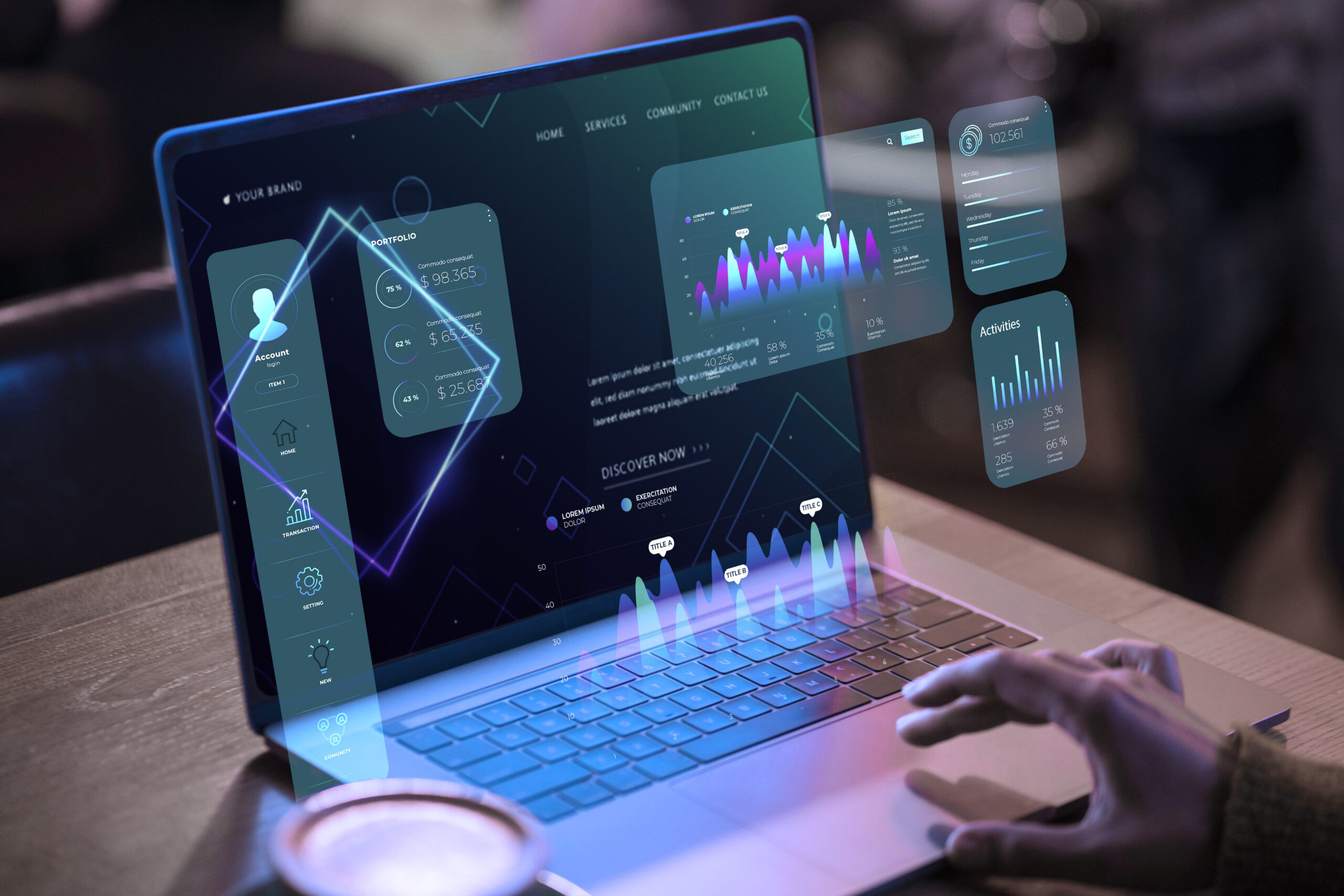Building Resilient Software: Cloud-Native Architecture & DevSecOps for Next-Gen IT Services
In today’s digital-first world, “it works on my machine” isn’t good enough. You need systems that scale smoothly during peak demand, heal themselves when failures happen, and keep attackers out without slowing your team down. That’s exactly what cloud-native development plus DevSecOps delivers.
At Aexaware Infotech, we help startups, SMEs, and enterprises adopt this approach turning software into a scalable, secure, and resilient growth engine.
What is Cloud-Native (and why it matters)
Cloud-native apps are designed specifically for modern cloud environments. They rely on containers, microservices, service meshes, immutable infrastructure, and declarative APIs to achieve scale and reliability across public, private, or hybrid clouds.
Key building blocks
- Microservices: Small, independent services aligned to business capabilities; each can be built, deployed, and scaled on its own.
- Containers: Self-contained runtime units that package code and dependencies for consistent deployments across environments.
- Orchestration (Kubernetes): Automates deployment, healing, and autoscaling so workloads elastically react to demand.
- Serverless: Event-driven compute where the cloud provider handles servers and scaling; you pay only for execution time.
- Infrastructure as Code (IaC): Define infrastructure in version-controlled files (e.g., Terraform) for consistency, repeatability, and speed.
DevSecOps: Security built into the pipeline
Traditional DevOps optimized for speed; DevSecOps makes security a first-class citizen across plan → code → build → test → deploy → run.
- NIST’s guidance (SP 800-204C) details DevSecOps for cloud-native microservices and its benefits for higher assurance and continuous ATO.
- The NCCoE’s new SP 1800-44 (prelim draft, 2025) adds practical, risk-based DevSecOps practices organizations can adopt now.
- The Secure Software Development Framework (SSDF, NIST SP 800-218) provides the baseline practices to reduce vulnerabilities across the SDLC.
- Why leaders care: High-performing teams are measured by DORA’s Four Key Metrics (lead time, deployment frequency, MTTR, change failure rate) now the de-facto yardstick for software delivery.
How Cloud-Native + DevSecOps work together (step-by-step)
1) Foundation: Platform & IaC
- Codify cloud resources with Terraform (networks, clusters, databases, secrets).
- Version everything in Git; changes go through code review and CI.
- Automate environment creation for dev/stage/prod to avoid config drift.
2) Build: Containerize & Secure the Supply Chain
- Containerize each microservice with minimal base images.
- Sign & attest builds; adopt SLSA levels to harden the software supply chain.
- Generate SBOMs (SPDX or CycloneDX) for third-party transparency and faster vulnerability response.
3) Deploy: Kubernetes, GitOps & Serverless where it fits
- Use GitOps to declare desired state; controllers reconcile clusters to match Git.
- Enable Horizontal Pod Autoscaling for elastic scaling; mix in serverless functions for bursty, event-driven tasks.
4) Run: Security & Observability by default
- Shift left: static/dynamic testing, dependency scanning, container scan gates in CI.
- Harden clusters using CIS Kubernetes Benchmarks.
- Zero Trust access patterns (least privilege, continuous verification) across services and users.
- SLOs/alerts on golden signals (latency, traffic, errors, saturation) and track DORA metrics to improve flow.
Where Aexaware Infotech delivers value
1) Website & Mobile App Development
Secure, responsive apps engineered for scale containerized, CI/CD-ready, with observability baked in.
2) Custom Software Solutions
Microservice-driven backends, API gateways, and integrations that evolve with your business (without big-bang rewrites).
3) Cloud & DevOps Services
Kubernetes operations, Terraform-based IaC, GitOps workflows, and reliability practices from day one.
4) AI/ML Integration
ML pipelines running in secure, containerized environments with reproducible builds, SBOMs, and data governance.
5) UI/UX Design
Task-oriented dashboards for SREs, security, and product teams live SLOs, deployment health, and compliance status.
Business benefits (in plain English)
- Faster time-to-market: Ship smaller changes more often; improve lead time & deploy frequency (DORA metrics).
- Scale on demand: Kubernetes autoscaling and serverless handle traffic spikes no manual intervention.
- Built-in security: SSDF practices + SLSA + SBOMs reduce supply-chain and runtime risk.
- Future-proof platform: CNCF-aligned tech and GitOps make upgrades and multi-cloud/hybrid a non-event.
Real-world snapshot: E-commerce holiday surge
An online retailer expects a 6× spike during Diwali sale week. With Kubernetes autoscaling and serverless checkout hooks, services scale horizontally, while signed builds and SBOM-driven dependency checks keep each release compliant and verifiable fast, safe, and cost-effective.
Implementation blueprint (Aexaware’s proven path)
Phase 1 – Assess & Plan (1–2 weeks)
- Current architecture, threat model, compliance targets
- DORA baseline, SLO proposals, cost guardrails
Phase 2 – Platform Foundation (2–4 weeks)
- Terraform modules, Kubernetes cluster, GitOps controller
- Centralized CI/CD with security scan gates (SAST/DAST/container/IaC)
Phase 3 – App Modernization (4–8 weeks)
- Break out candidate microservices, containerize, add autoscaling policies
- Introduce event-driven/serverless for bursty workloads
Phase 4 – Security Hardening & Observability (2–3 weeks)
- CIS Kubernetes hardening, Zero Trust access, SBOM + SLSA attestations
- Dashboards for SLOs, release health, and cost
Phase 5 – Operate & Improve (ongoing)
- Error budgets, incident drills, release retros tied to DORA metrics
FAQ (quick answers for busy teams)
Q1. What does “cloud-native” actually mean?
Designing apps to fully leverage the cloud containers, microservices, declarative APIs and automation so they scale and recover quickly in dynamic environments.
Q2. How does DevSecOps improve development speed and safety?
By integrating security practices and evidence (tests, scans, attestations) into the same pipelines that deliver software, teams catch issues earlier and ship with higher confidence.
Q3. Why combine cloud-native with DevSecOps?
Cloud-native gives elasticity and reliability; DevSecOps makes that agility secure and compliant measured with DORA’s delivery & stability metrics.
Q4. What are SBOMs and SLSA and do I need them?
SBOMs list your components; SLSA defines integrity levels for your build process. Together they make supply-chain risk visible and provably controlled.
Q5. How do you harden Kubernetes in production?
Follow the CIS Kubernetes Benchmark and enforce least-privilege, network policies, and secret management then validate continuously.
Ready to future-proof your stack?
Whether you’re launching a new product or modernizing a legacy platform, Aexaware Infotech can design, build, and operate a cloud-native, DevSecOps-driven ecosystem tailored to your goals.
👉 Let’s build resilient software together.
Email: [email protected] · Phone: +91 81407 34392




